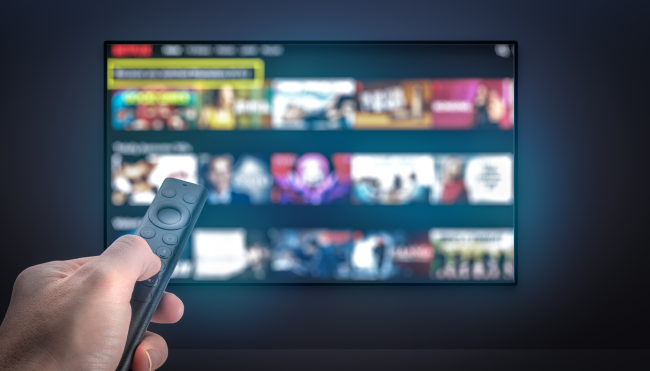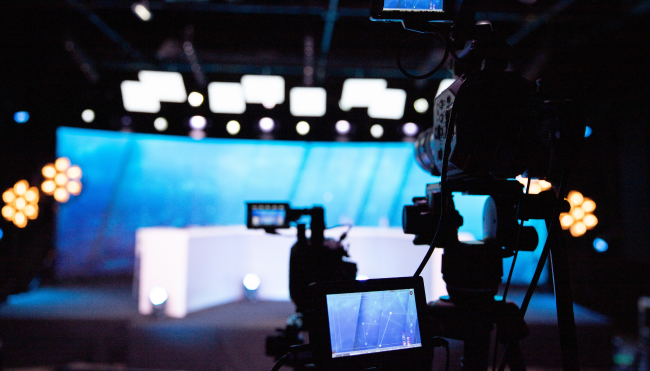- Why Amagi
-
Solutions
Contact UsBusinessWho We Serve
- Offerings
- AI
-
Resources
Contact UsINDUSTRY REPORTSAmagi FAST Report #15: The Power of Live Programming: A Catalyst for Streaming SuccessAugust 21, 2025Read More
-
Company
Contact UsNewsroomAmagi launches AI-powered Smart Scheduler to improve content programmingApril 3, 2025Read More
Blog
Driving innovation in sports streaming with FAST
By The Editorial Team, - August 14, 2025
At the recent SVG Digital Engagement Forum, Amagi's EVP of Global SaaS Sales, Dan Marshall, joined a panel discussion moderated by SVG's Senior Editor Kristian Hernández to explore 'The FAST Factor: Sports Joins the Latest Streaming Party.' They were also joined by NBC Sports’ Brian Gilmore and NBA’s Felipe Salz. Read on for Marshall’s exclusive insights on lean-in versus lean-back philosophy, advice on critical factors to consider when starting a FAST channel, and more.
SVG: From a vendor point of view, what is Amagi bringing to the table in the FAST ecosystem?
Marshall: Amagi, as one of the primary infrastructure providers for FAST, caters to the tune-in experience that platforms and content owners seek. Tune-in is the ability to use a piece of video to get people to tune in to another piece of video. For example, on the NBA channel on FAST, if you want to promote a live event, you could ask the viewers to tune in to League Pass or an app to go ahead and drive them to a different live experience.
Take the G League as an example. We're seeing a lot of sports content owners and platforms looking to run FAST channels but bring in live events at some point in order to drive up engagement and Cost Per Mille (CPM) — the cost an advertiser pays for every 1,000 impressions (views) of their ad. And driving up CPM is important because it drives up revenue. So, having the technology that allows our customers to do that, whether they're platforms or content owners, where we put a lot of investment in, we create the technology to create more monetization.
Ultimately, that's what we're trying to help our clients with: to take the content, whether it's archive content or live content, and put it into an ad-supported tier that offers a better user experience and opportunities for incremental revenue and reach for our customers.
WATCH: Maximize monetization and scale streaming revenue
SVG: Dan, you brought up a cool analogy — the lean-in versus the lean-back philosophy. Can you dive into that and where it pertains to FAST and where you think it fits?

Marshall: When we talk about lean-back versus lean-in, we're also looking with our customers on how to engage and better the user experience. So, for example, I prefer a lean-back experience, where I can sit back at the end of the day and watch sports on a nice big screen, just have a cold beer, and enjoy the moment. But, in the case of my children, they want the lean-in experience.
Take my kids, for example — they're big sports fans too. What they’re really after is that 'lean-in' experience. They want to explore. They want to play trivia. They want chat windows open so they can talk to their friends while watching. They're into gamification — not gambling, but fun, interactive elements like trivia. They're also excited about augmented reality. I was lucky enough to get early access to the NBA app while it was still in beta. One of the features lets you scan your body into the game. My son — who usually watches maybe 10 minutes at a time, even though he’s a huge Warriors fan — gets to scan his body in and put himself in Steph Curry's body. So he's watching himself as Steph Curry. He stayed in through the entire game. Every time a shot went in, a flame would shoot out—thanks to AR. It completely drew him in.
Now, for me, that’s way too much work. But for this next generation—Gen Z, Gen Alpha—these are the kinds of experiences they expect.
FAST offers a ton of great content today and great engagement. But I think as you start looking at what comes beyond that, you have to take into consideration that type of viewing. I don't want to call it a habit yet, but a requirement that's going to come out of that demographic.
READ: How FAST channels complement on-demand strategy
SVG: What piece of advice would you give to someone who is thinking about starting a FAST channel?
Marshall: Discoverability is the key. And it's the one that's applicable to everybody, not just in sports, but everybody in FAST in general. When you take a look at Samsung TV Plus now, you open the platform and have over 700 channels. And they're committed to moving to 2,500 channels. They're going to move from 20,000 VOD assets to over 300,000 in the next two years. How do you make this discoverable? I think that's a challenge there. There are a lot of interesting solutions coming out for that — AI and personalization will be a few of those.
There are some discoverability tools around social media – you can take clips out and send them to multiple social media endpoints. I think that is going to be an area to really look at. Things like making sure that your metadata is correct so that you can get to the platforms you need to have been well-baked. So if I'm starting to think about things on the business side and I've got content that I think is good, the questions to ask are ‘How am I going to get people's eyeballs on it?’ and ‘How am I going to monetize it to the maximum capacity?’
To watch the full video, click here.
Want to know more?
- Read our latest Global FAST Report
- Watch our webinars
- Talk to us about all things streaming
Related Blogs
Get started
Increase revenue and reach with our Broadcast & Streaming solutions.
Cloud modernization. Streaming unification. Monetization. Marketplace.
 German
German French
French Spanish
Spanish Korean
Korean Japanese
Japanese Portuguese
Portuguese


